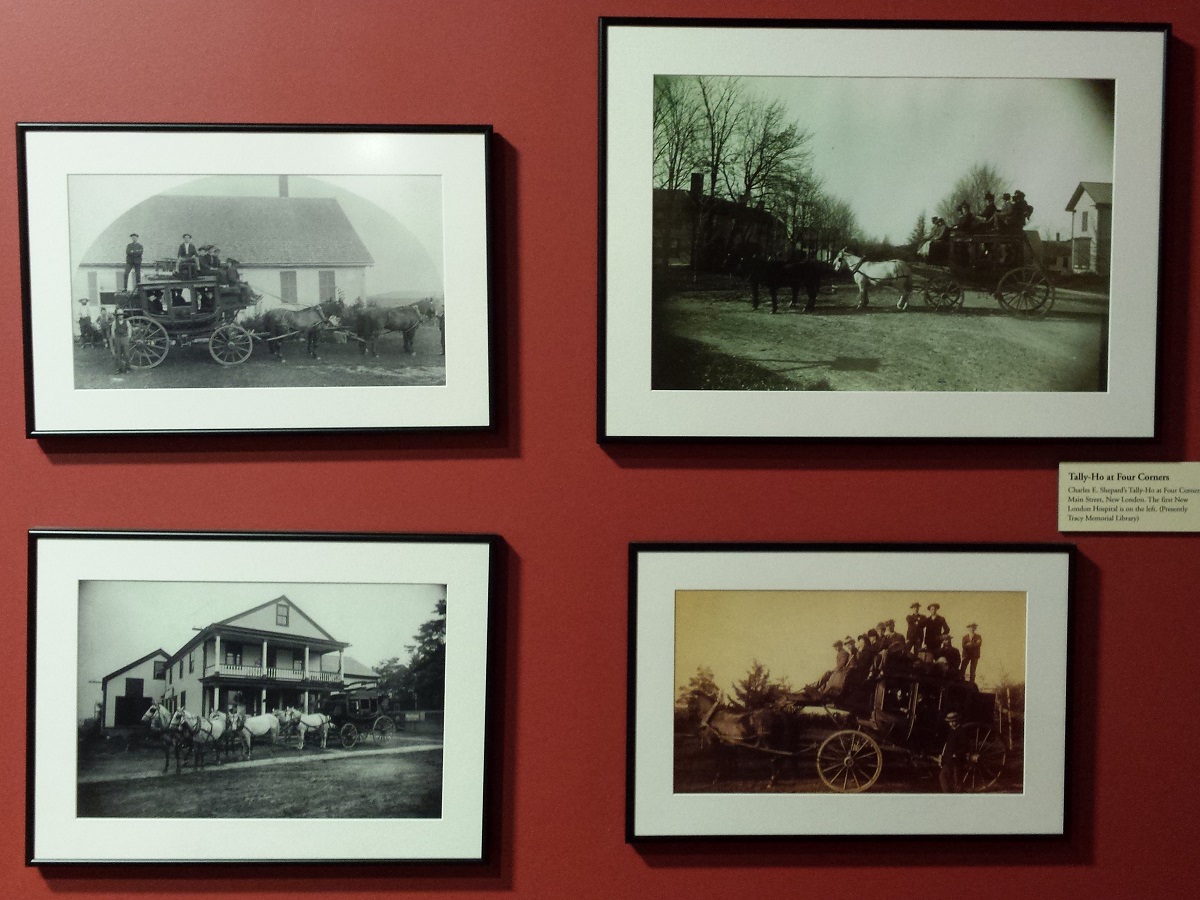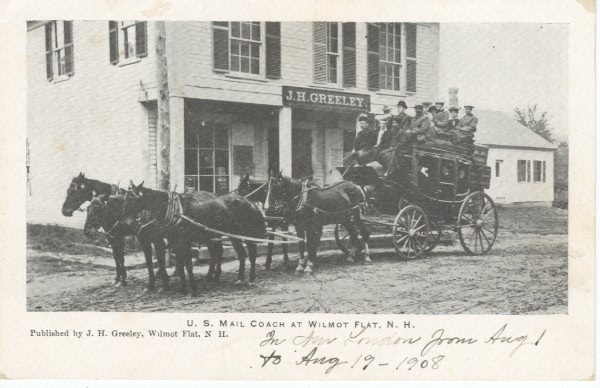4 or 6 Horse Hitch


One of the most commonly asked questions about the Concord Coach is "How many horses did it take to pull this vehicle?"
While you will notice one picture of the coach being pulled by a pair of draft horses for a special occasion in the 1940s, this was not the typical configuration. Because the normal operating gait was a trot rather than a walk, the coach was pulled by horses who were comfortable moving at a trot for extended distances; horses somewhat smaller than the typical draft horse. Of course, when using smaller horses, you need to use more of them to provide the same amount of "horsepower". Consequently, the typical team consisted of either four horses (two wheelers and two leads) or six horses (two wheelers, two swings, and two leads). You can see several examples of these configurations in the photographs on the wall adjacent to the Concord Coach.
However, Mr. Shepard settled on an interesting compromise -- a five horse hitch, commonly referred to as a 'pickaxe' or 'hammerhead' hitch. In this configuration, shown in the lower picture in front of the general store in Wilmot Flat, the vehicle is being pulled by five horses -- a pair of wheel horses and three horses abreast as the leaders. Visitors to the Transportation Building can see a photograph of a 5-horse hitch being watered in Elkins (on the wall near the front of the coach) and a painting of the coach at the Potter Place railroad station (elsewhere in the exhibit area). There are several stories and theories to support Mr. Shepard's choice of this unusual configuration but, whatever the reason, it is clear that he used this configuration on a regular basis.
Click Here to see a video of a 5 Horse Hitch (in England), pulling a Rooftop Break similar to the one in our Transportation Building.
..